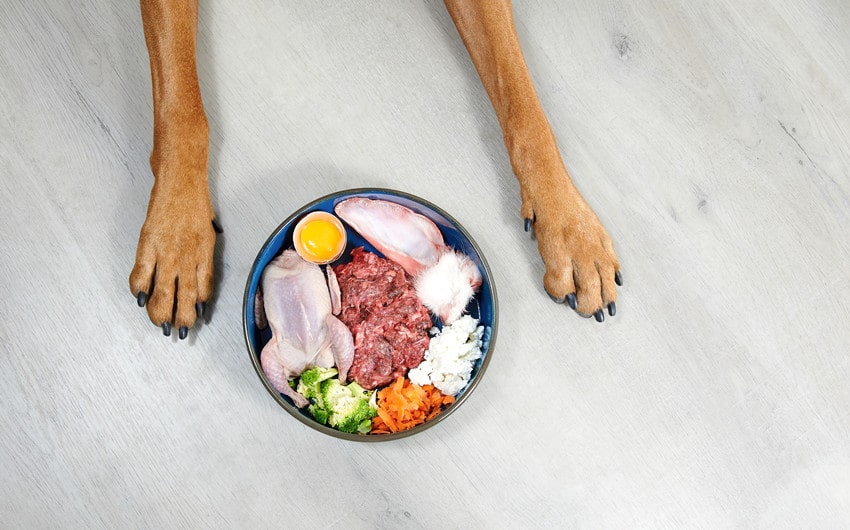The Case for Raw Dog Food: Why More Owners Are Making the Switch
Dogs have lived alongside humans for thousands of years, and for most of that time their meals looked nothing like the neat brown pellets we pour from bags today. In recent years, many owners have begun circling back to something closer to what a dog’s ancestors ate: raw food. It’s not a fringe idea anymore. More veterinarians, breeders, and long-time dog people are openly discussing its benefits. While kibble remains convenient, raw feeding has carved out its place by offering results owners can see in their pets’ health and vitality.
A Return to Natural Nutrition
When people talk about raw diets for dogs, they’re usually referring to meals built around raw meat, bones, organs, and sometimes vegetables or fruits. The thinking is simple: dogs evolved as carnivores and scavengers, and their bodies are wired to process whole, fresh ingredients. Advocates point out that heat processing strips commercial kibble of many natural nutrients, which manufacturers then replace with synthetic additives. By contrast, raw meals provide those nutrients in their original form. Owners often notice shinier coats, cleaner teeth, and fewer digestive upsets once they make the change. And while every dog reacts differently, the broader shift has been enough to keep the raw movement growing year after year.
The Fresh Factor That Matters
Not all raw feeding looks the same, but freshness is central to the appeal. Some owners prepare meals at home, while others rely on commercially prepared raw blends that balance nutrients more precisely. Interest has even spilled into the lightly cooked and gently processed segment of the market, which aims to deliver whole-food nutrition with slightly less risk. Within this trend, products like fresh lamb dog food have become particularly popular. Lamb is highly digestible, often easier on sensitive stomachs, and tends to be rich in essential amino acids. For dogs prone to allergies or skin conditions, lamb can offer a welcome alternative to chicken or beef. This kind of variety is part of why raw and fresh diets continue to gain traction with owners who want more control over what goes into their dogs’ bowls.
What It Means for Digestion and Energy
A common observation from raw feeders is that their dogs seem to digest food more efficiently. Stools are often smaller and less odorous, which indicates that more of the food is being absorbed instead of passing through. Dogs may also show steadier energy levels throughout the day. Kibble can cause spikes and crashes because of its carbohydrate load, while raw diets tend to keep blood sugar more stable. Better digestion translates to less bloating, reduced gas, and fewer instances of unexplained stomach upsets. While it doesn’t turn every dog into a puppy again, many owners report their pets move more easily, recover faster after activity, and carry a healthier body condition.
Stronger Teeth, Shinier Coats, and Fewer Vet Visits
One of the most celebrated outcomes of raw feeding is oral health. Raw meaty bones act like nature’s toothbrush, scraping away plaque and tartar as the dog gnaws. That natural cleaning power helps reduce the risk of gum disease, which is a hidden source of health issues in many dogs. Coats often become glossier and softer, a direct reflection of better fatty acid intake. Skin irritation can calm down, nails grow stronger, and some chronic issues seem to ease up once processed fillers are removed from the diet. Owners often describe fewer ear infections, less itching, and an overall healthier appearance. None of this means raw feeding is a cure-all, but the cumulative effect is enough to significantly keep pets healthy and thriving in ways that matter day to day.
Balancing the Risks and Responsibilities
Feeding raw isn’t as simple as throwing a steak in a bowl. Balance is everything. Dogs need the right ratios of muscle meat, organ meat, bone, and other nutrients to avoid deficiencies or excesses. Safe handling is equally important since raw meat carries bacteria that can affect both pets and people. That’s why many owners prefer reputable commercial raw products, which are formulated to meet nutritional standards and often undergo safety checks. The rise of freezer-ready patties, pre-portioned blends, and even freeze-dried raw has made it far easier to feed raw responsibly. Convenience is improving, but the commitment remains higher than scooping kibble. For those who are willing, the trade-off is a diet that feels closer to nature and often delivers visible results.
Why the Movement Is Growing
Raw feeding has momentum because the results speak for themselves. Owners see cleaner teeth, more energy, and shinier coats, and word spreads quickly in parks, training classes, and online communities. Pet food companies have noticed, and the market has responded with everything from subscription meal services to raw-inspired treats. The movement dovetails with broader human trends toward fresh, whole foods, and it’s not surprising that pet owners want the same quality for their dogs. As more data emerges and safety standards tighten, raw feeding looks less like a fad and more like an evolving part of the pet food landscape.
Raw dog food is reshaping how people think about feeding their pets, shifting the conversation from convenience alone to overall health and quality of life. While it demands care, planning, and responsibility, the rewards can be remarkable. For owners who’ve seen the difference firsthand, the effort feels well worth it.







